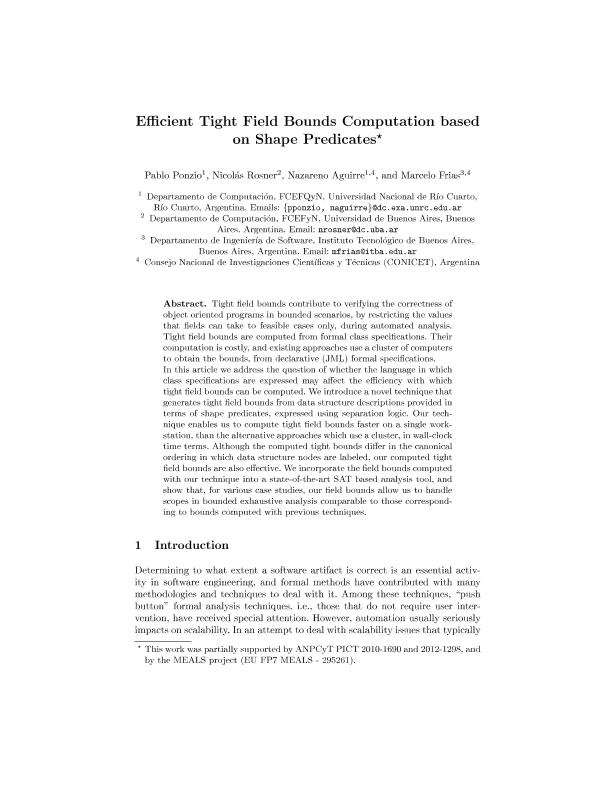Artículo
Efficient Tight Field Bounds Computation Based on Shape Predicates
Fecha de publicación:
05/2014
Editorial:
Springer
Revista:
Lecture Notes in Computer Science
ISSN:
0302-9743
Idioma:
Inglés
Tipo de recurso:
Artículo publicado
Clasificación temática:
Resumen
Tight field bounds contribute to verifying the correctness of object oriented programs in bounded scenarios, by restricting the values that fields can take to feasible cases only, during automated analysis. Tight field bounds are computed from formal class specifications. Their computation is costly, and existing approaches use a cluster of computers to obtain the bounds, from declarative (JML) formal specifications. In this article we address the question of whether the language in which class specifications are expressed may affect the efficiency with which tight field bounds can be computed. We introduce a novel technique that generates tight field bounds from data structure descriptions provided in terms of shape predicates, expressed using separation logic. Our technique enables us to compute tight field bounds faster on a single workstation, than the alternative approaches which use a cluster, in wall-clock time terms. Although the computed tight bounds differ in the canonical ordering in which data structure nodes are labeled, our computed tight field bounds are also effective. We incorporate the field bounds computed with our technique into a state-of-the-art SAT based analysis tool, and show that, for various case studies, our field bounds allow us to handle scopes in bounded exhaustive analysis comparable to those corresponding to bounds computed with previous techniques.
Palabras clave:
Tight Field Bounds
,
Shape Predicates
,
Bounded Verification
Archivos asociados
Licencia
Identificadores
Colecciones
Articulos(CCT - CORDOBA)
Articulos de CTRO.CIENTIFICO TECNOL.CONICET - CORDOBA
Articulos de CTRO.CIENTIFICO TECNOL.CONICET - CORDOBA
Articulos(SEDE CENTRAL)
Articulos de SEDE CENTRAL
Articulos de SEDE CENTRAL
Citación
Rosner, Nicolas Leandro; Aguirre, Nazareno Matias; Ponzio, Pablo Daniel; Frias, Marcelo Fabian; Efficient Tight Field Bounds Computation Based on Shape Predicates; Springer; Lecture Notes in Computer Science; FM2014; 5-2014; 531-546
Compartir
Altmétricas




